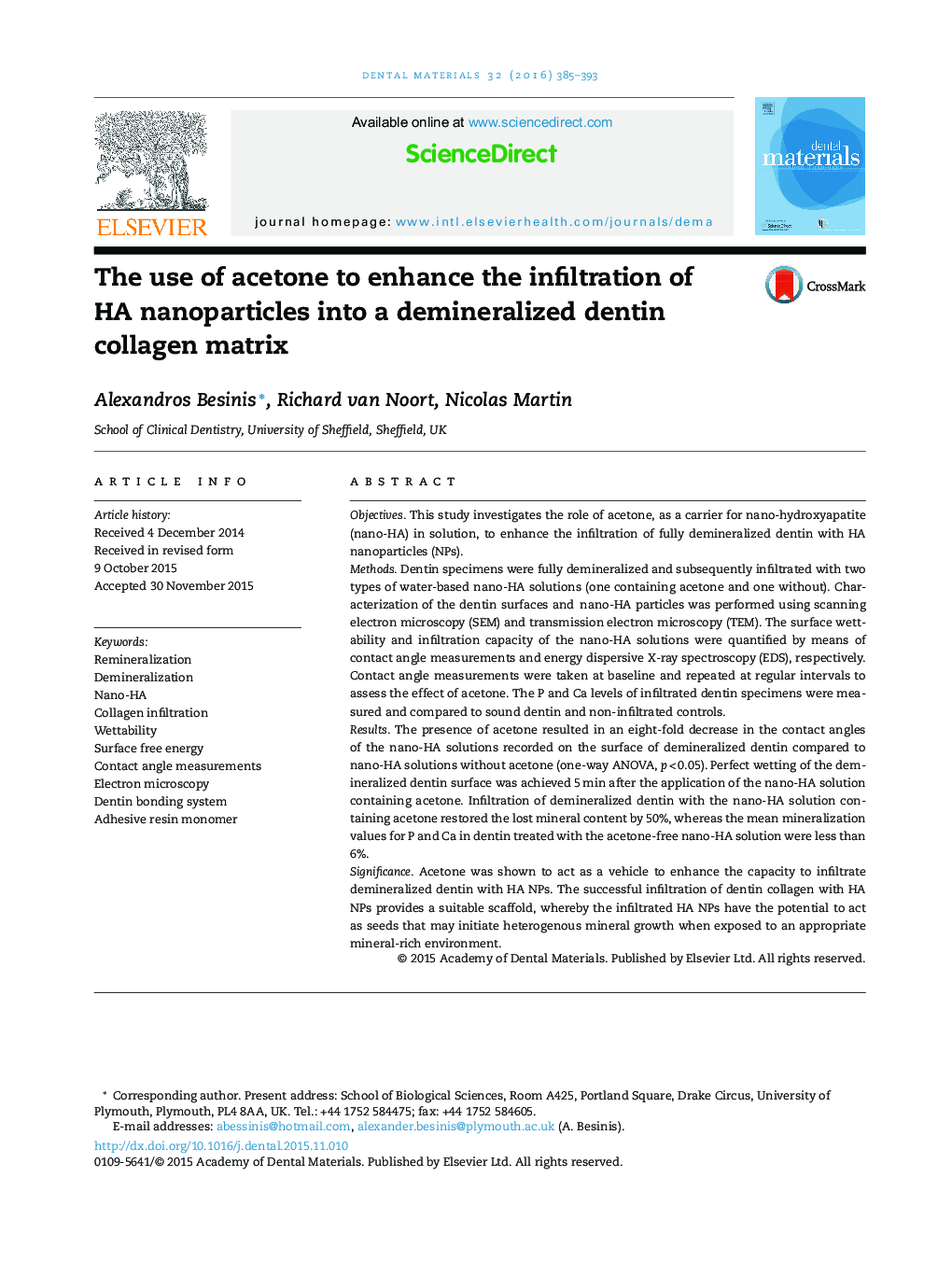| Article ID | Journal | Published Year | Pages | File Type |
|---|---|---|---|---|
| 1420516 | Dental Materials | 2016 | 9 Pages |
•Demineralization of dentin causes a decrease in the surface free energy.•Acetone added to a nano-HA solution increases the surface wetting of dentin.•Acetone facilitates the infiltration of dentin collagen with HA nanoparticles.•Mineral recovery of demineralized dentin is higher in the presence of acetone.•Demineralized dentin absorbs nano-HA solutions faster due to increased permeability.
ObjectivesThis study investigates the role of acetone, as a carrier for nano-hydroxyapatite (nano-HA) in solution, to enhance the infiltration of fully demineralized dentin with HA nanoparticles (NPs).MethodsDentin specimens were fully demineralized and subsequently infiltrated with two types of water-based nano-HA solutions (one containing acetone and one without). Characterization of the dentin surfaces and nano-HA particles was performed using scanning electron microscopy (SEM) and transmission electron microscopy (TEM). The surface wettability and infiltration capacity of the nano-HA solutions were quantified by means of contact angle measurements and energy dispersive X-ray spectroscopy (EDS), respectively. Contact angle measurements were taken at baseline and repeated at regular intervals to assess the effect of acetone. The P and Ca levels of infiltrated dentin specimens were measured and compared to sound dentin and non-infiltrated controls.ResultsThe presence of acetone resulted in an eight-fold decrease in the contact angles of the nano-HA solutions recorded on the surface of demineralized dentin compared to nano-HA solutions without acetone (one-way ANOVA, p < 0.05). Perfect wetting of the demineralized dentin surface was achieved 5 min after the application of the nano-HA solution containing acetone. Infiltration of demineralized dentin with the nano-HA solution containing acetone restored the lost mineral content by 50%, whereas the mean mineralization values for P and Ca in dentin treated with the acetone-free nano-HA solution were less than 6%.SignificanceAcetone was shown to act as a vehicle to enhance the capacity to infiltrate demineralized dentin with HA NPs. The successful infiltration of dentin collagen with HA NPs provides a suitable scaffold, whereby the infiltrated HA NPs have the potential to act as seeds that may initiate heterogenous mineral growth when exposed to an appropriate mineral-rich environment.
